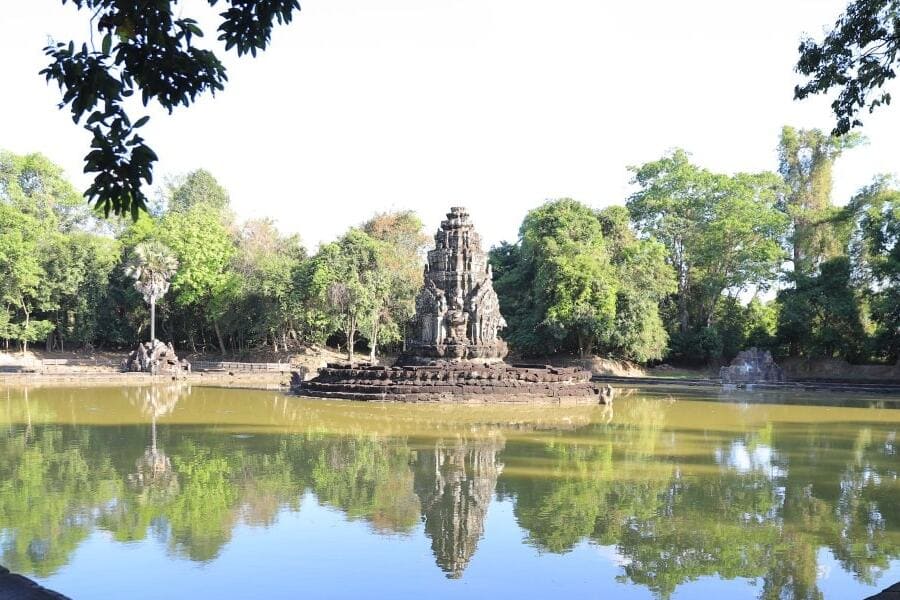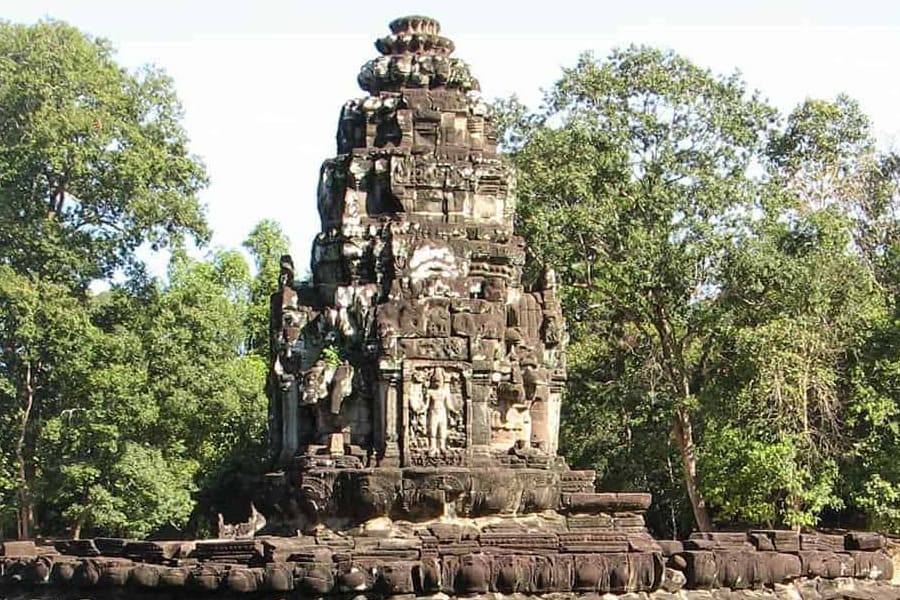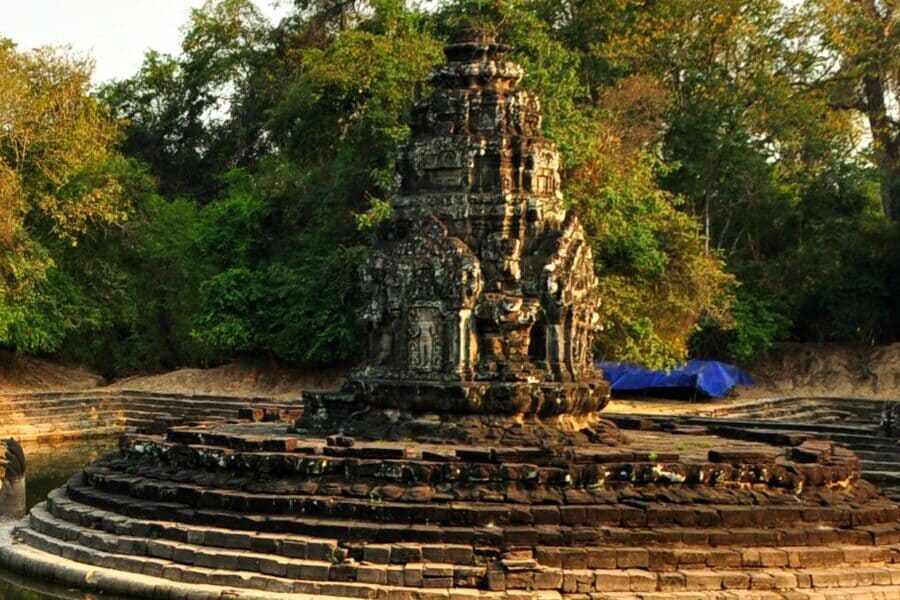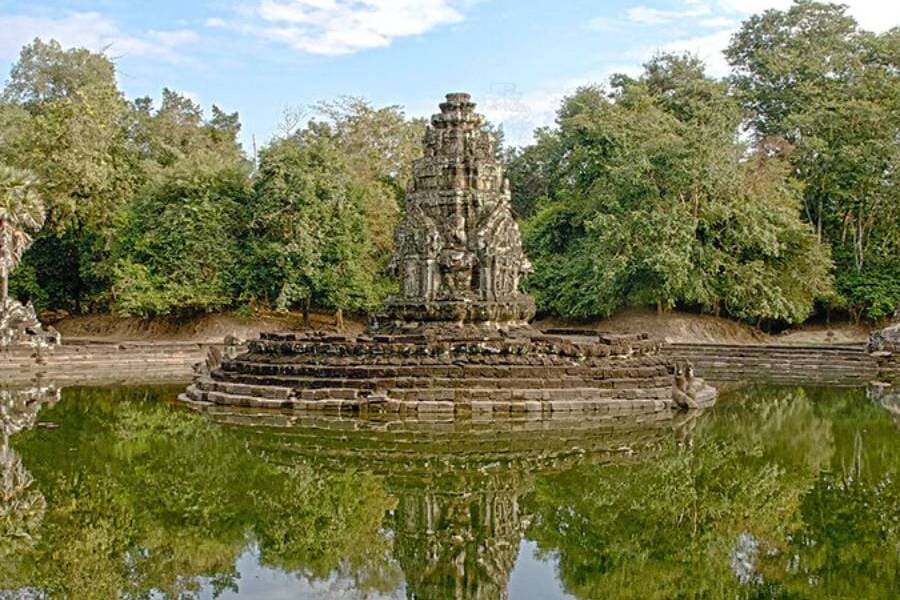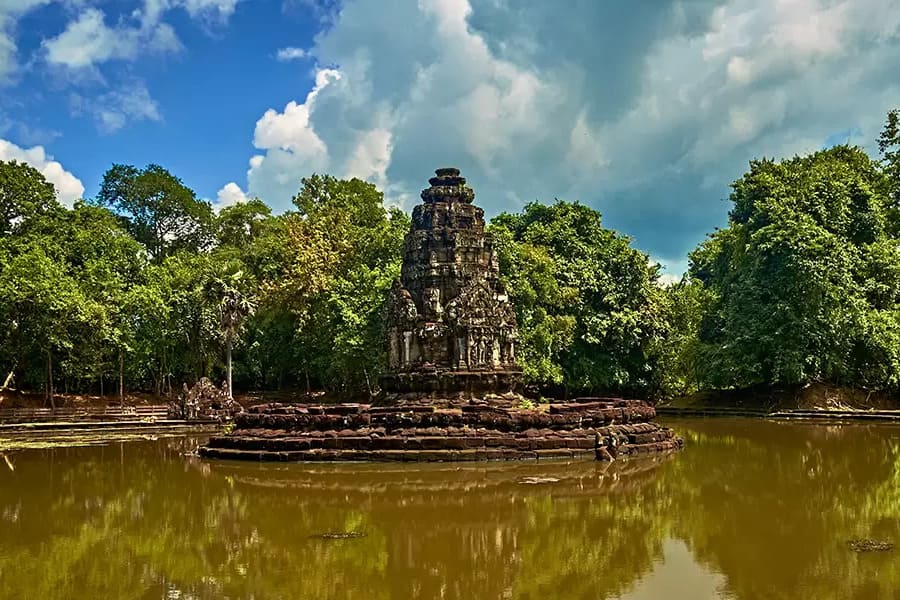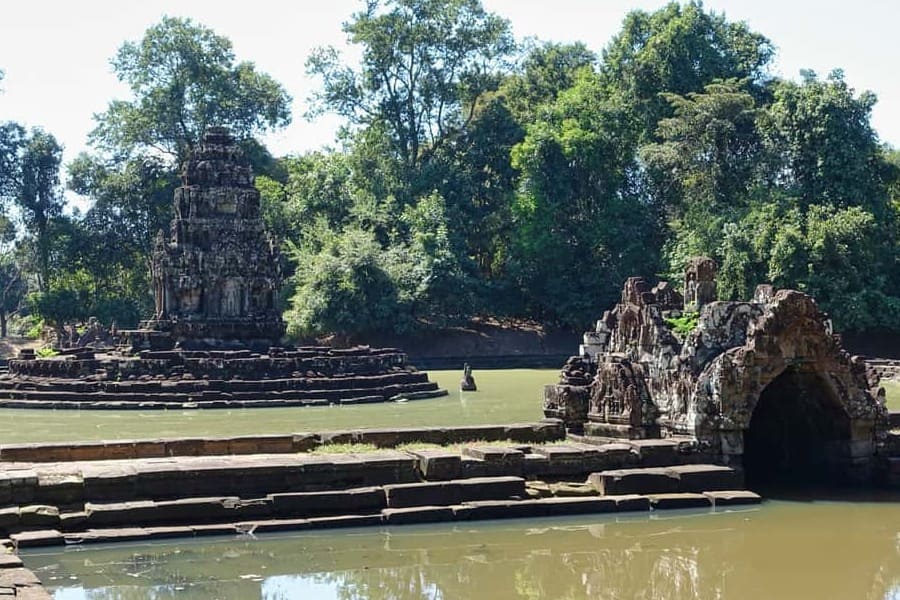Embark on an unforgettable Cambodia trip and discover the hidden gem of Neak Pean, a captivating island temple nestled amidst the majestic Angkor complex. Situated in the heart of a tranquil reservoir, Neak Pean offers a serene sanctuary away from the bustling crowds, inviting travelers to delve into its mystical allure. With its unique island setting and intricate architectural features, this small temple holds a special place within Cambodia's rich cultural heritage.
Contents
The meaning of “Neak Pean”
"Neak Pean" translates to "The Entwined Serpents" or "The Coiled Serpents" in Khmer. The name "Neak Pean" is derived from the temple's central feature, which is a square-shaped pool adorned with intertwining serpent sculptures. These serpents represent the mythical Nagas, serpent-like beings often depicted in Hindu and Buddhist mythology, symbolizing water and protection. The name "Neak Pean" reflects both the architectural elements of the temple and the spiritual significance associated with the Nagas in Cambodian culture.
The History of Neak Pean
Neak Pean, a small island temple located within the expansive Angkor Archaeological Park in Cambodia, holds a significant place in the region's history and religious tradition. Built during the reign of King Jayavarman VII in the late 12th century, Neak Pean is believed to have served as a place of healing and spiritual rejuvenation.
The temple's name, which translates to "The Entwined Serpents" in Khmer, reflects its central feature—a square-shaped artificial pool adorned with intricate serpent sculptures. According to historical accounts, Neak Pean was conceived as a sacred site dedicated to the worship of water deities and the practice of therapeutic rituals.
The temple's strategic location amidst a reservoir symbolizes the cosmic oceans in Hindu mythology, where the Nagas, revered serpent beings, are said to dwell. Visitors to Neak Pean would have participated in rituals involving water immersion, seeking spiritual purification and divine blessings.
Over the centuries, Neak Pean fell into disrepair and was gradually reclaimed by the surrounding landscape. However, ongoing conservation efforts have ensured that this historic site remains accessible to modern-day travelers, offering a glimpse into Cambodia's rich cultural heritage.
The Architecture of Neak Pean
Neak Pean's architecture is characterized by its unique island setting and intricate water features, which distinguish it from other temples within the Angkor complex. The temple consists of a central platform surrounded by a square-shaped reservoir, with four smaller ponds positioned at the cardinal points.
The central platform is accessed via a causeway adorned with Naga balustrades, leading visitors across the tranquil waters to the heart of the temple complex. At the center of the platform stands a small cruciform sanctuary, believed to have housed a sacred statue or shrine dedicated to water deities.
The highlight of Neak Pean's architecture is its square-shaped pool, which is adorned with four serpent sculptures, each spouting water into the reservoir below. These serpents, representing the mythical Nagas, are intricately carved and symbolize the cosmic forces of water and protection.
Surrounded by lush greenery and framed by the serene waters of the reservoir, Neak Pean's architecture creates a tranquil and contemplative atmosphere, inviting visitors to connect with the spiritual essence of this ancient temple.
Practical tips for visitors traveling to Neak Pean
The best time to visit Neak Pean
The best time to visit Neak Pean is during the dry season, which typically spans from November to April in Cambodia. During this time, the weather is generally sunny and dry, making it ideal for exploring outdoor attractions such as temples and archaeological sites.
The dry season offers comfortable temperatures and lower humidity levels, creating pleasant conditions for visiting Neak Pean's serene island setting and tranquil reservoir. Additionally, the clear skies and abundant sunshine provide optimal lighting for appreciating the temple's intricate architecture and surrounding natural beauty.
Opening hours
7:30 am- 17:30 pm from Mondays to Sundays
How to get to Neak Pean?
To get to Neak Pean, you'll need to travel to Siem Reap, the nearest city to the Angkor Archaeological Park where Neak Pean is located. From Siem Reap, you have several options for reaching Neak Pean:
Tuk-Tuk: Tuk-tuks are a popular mode of transportation in Siem Reap and can easily be hired to take you to Neak Pean. Negotiate a fare with a tuk-tuk driver for a round-trip journey or hire one for the day to explore multiple temples within the Angkor complex.
Bicycle: Renting a bicycle is a convenient and eco-friendly way to explore the Angkor Archaeological Park, including Neak Pean. Many guesthouses and bike rental shops in Siem Reap offer bicycle rentals for a reasonable daily rate. Keep in mind that the ride to Neak Pean may take around 30-45 minutes depending on your starting point in Siem Reap.
Motorbike: For travelers comfortable riding a motorbike, renting one in Siem Reap provides flexibility and independence for exploring Neak Pean and other temples in the area. Be sure to wear a helmet and exercise caution while navigating the roads.
Car or Tuk-Tuk Tour: If you prefer a more guided experience, you can arrange for a car or tuk-tuk tour through a local tour operator or your accommodation in Siem Reap. Many tour packages include transportation to Neak Pean as part of a larger itinerary covering multiple temples in the Angkor complex.

